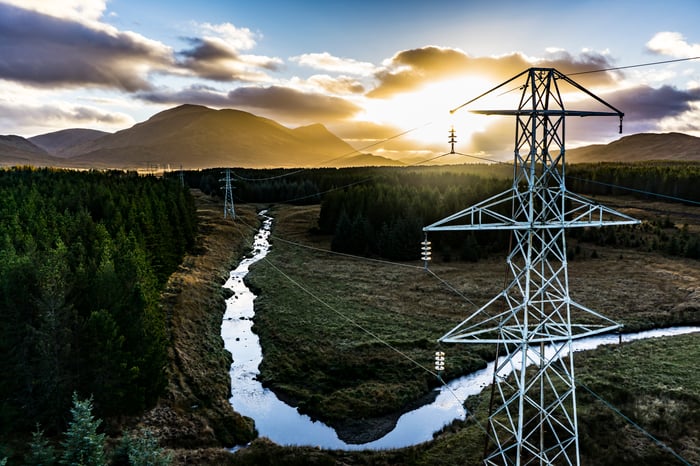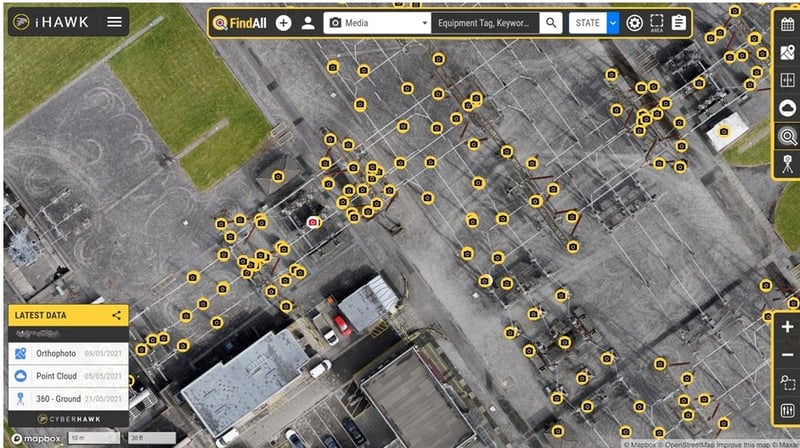Utility companies face increasing pressure from regulators seeking to protect consumers from escalating costs. This general trend in the industry places them under pressure to justify their budget by demonstrating the condition of their equipment and their specific maintenance needs to keep their network in reliable working order.
Our client, one of the world's largest publicly listed utilities focused on transmission and distribution of electricity and gas, is no exception. Reviews and budget constraints are implemented by the regulator on a regular basis.
In 2017, the government energy regulator confirmed it would reduce the provider’s spending allowances in its current price controls for running the high voltage electricity grid and high-pressure gas main by over $200 million.
It was clear - our client had to re-look at their spending, their existing systems and infrastructure. A review found that the systems and processes they used to monitor the condition of their equipment and planning maintenance activities were inadequate for the current business environment.
They needed a solution that could integrate with their legacy systems and close gaps in their workflow processes.
Their search for a technology partner to help them overcome these challenges led them to Cyberhawk and the implementation of a Proof of Concept (PoC) project. The iHawk solution provided them with a platform for increased remote monitoring and fewer trips to site for maintenance activities.
This supported our client’s commitment to ESG (Environmental, Social and Corporate Governance), and their focus to reduce their carbon footprint.

The Challenge
Our client owns a substantial portion of high voltage electricity transmission network and, as such, the reliability of pylons, cables, and substations are of critical importance to the power supply to millions of users.
We begin planning and executing maintenance repairs on the grid by collecting information on the condition of assets using drones, helicopters, cameras, and laser scanners. However, no direct link exists between inspection reports and the asset management system, meaning that some tasks may be missed or delayed. The shortfalls in the legacy systems and processes give rise to the following challenges:
1. Reliability
The workflow gap between inspection and maintenance means that most work is executed on a time-based approach rather than risk-based. High-risk conditions may not be addressed quickly enough, leading to equipment failure and reliability issues. On the other hand, tasks may be planned and executed when the condition of the equipment does not warrant intervention. Unnecessary tasks inflate the maintenance burden of the grid.
2. Efficiency and ESG Performance
The lack of a global view of the equipment’s condition also hampers maintenance efficiency. Several site visits may be planned for different tasks, rather than one single visit covering all activities. The result is a waste of time and resources as well as a high carbon footprint.
3. Access to Information
The client’s legacy asset management system requires skilled administrators to write new reports to access information in different ways. A user cannot easily create their own report to get the information they need for decision making or investigation.
Interested in learning how we can support your project?
Download your free power grid capabilities overview pack now!
The Solution
Cyberhawk has an established track record in the power utility industry as a technology partner and solution provider. Our scope includes software solutions, engineering support and optimisation of inspection programs using drones.
In 2021 Cyberhawk were approached by the utility giant to implement the iHawk system on a single substation as a PoC. This allowed the organisation to test the system in a live application and assess its performance and benefits before broader implementation.
During the PoC phase, iHawk was installed as a software solution without the need for consulting support. They deployed the software with minimal training and telephonic support, thus demonstrating the system's ease of use and flexibility. They uploaded hundreds of inspection photographs, categorising them and assigning defect values based on their internal standards.
iHawk can connect to the Asset Management System (such as Ellipse) and the Building Information Modelling System (BIMS) and provides a holistic view of all available information. It also closes the gaps in workflow processes by enabling users to create work orders for executing maintenance tasks.
The powerful graphic displays and dashboards enable the client’s engineers to access the information they need. iHawk offers an immersive view of the substation, with each piece of equipment visible in its geospatial location. The system has a powerful dashboard of analytics and the ability to drill down into each piece of equipment to see the components and condition reports in more detail.
.jpg?width=939&name=Untitled%20design%20(2).jpg)
Imagery gathered from a multitude of platforms such as drones, tablets, cameras can be annotated and archived by date, asset type, location, etc providing a powerful library of visual evidence to support work planning, claims validation and predictive maintenance.
Interested in learning how we can support your project?
Download your free power grid capabilities overview pack now!
The Benefits
Although the current implementation of iHawk only covers one of the provider’s substations in the PoC, there are already significant visible benefits, including reduced site visits and a more efficient condition data management.
The graphic 3D visualisation of the site provides an easy-to-use and intuitive view of all equipment. Time-stamped inspection pictures with geospatial coordinates enable engineers to develop a clear and auditable risk management plan for each asset.
The following photos shows the interface for the PoC, demonstrating the quality of information, ease of use and power of the iHawk system.
Dashboards provide a user interface showing a map of risk. Traffic light colour-coded symbols clearly show high-risk conditions, and details are easy to find by drilling down into the next layer of information. Users can also query the system to get an overview of a particular class of asset. For example, how many ‘xxx- Steelwork' condition states exist, and where are they located.
Results
iHawk enables our client’s teams to manage the risk of their assets more effectively and budget their maintenance activities more accurately. Using our software, their engineers can adopt a proactive approach and plan repairs according to an asset's current condition and its risk of failure.
Flexible access to information, immersive visualisation and connection to legacy systems cover their workflow gaps. Engineers can translate condition assessments directly into maintenance plans, thus improving substation reliability and lowering the risk of equipment failure.
Additionally, iHawk helps optimise their inspection and maintenance work. They have eliminated duplicate trips to the PoC substation and lowered their carbon footprint as a result.
Interested in learning how we can support your project?
Download your free power grid capabilities overview pack now!
What Next?
Based on the success of the PoC project, our client is now exploring the rollout of the iHawk system across a further 296 substations. The solution can be applied to transmission and distribution elements of the grid, too, making the tool a valuable technology for managing the entire grid.
iHawk can work with legacy asset management systems to cover gaps in workflow processes or replace some asset management functions completely. It also democratises data from other sources so that users have access to all the information they need from one central place. In that way, iHawk opens up systems that cover a narrow engineering niche and makes their data available to a broader user base.
Our client are also seeking to expand their drone inspection program to reduce their carbon footprint. Cyberhawk is well-positioned to assist with this program due to our extensive experience in this field. We have developed effective management systems for large scale programs involving thousands of drone inspections that regularly cover the entire grid. Our proven QA/QC systems are designed with these programs in mind.
iHawk offers visualisation of sites and their equipment condition assessments. This utility giant will be able to measure clearances, plan work and induct personnel once the system is extended beyond the PoC into the rest of the infrastructure. As an added benefit, all these activities can happen remotely, meaning that they can lower their carbon footprint even more. Enabling remote activities also provides resilience for pandemic conditions with lockdowns and restrictions of travel.
Interested in learning how we can support your project?
Download your free power grid capabilities overview pack now!
